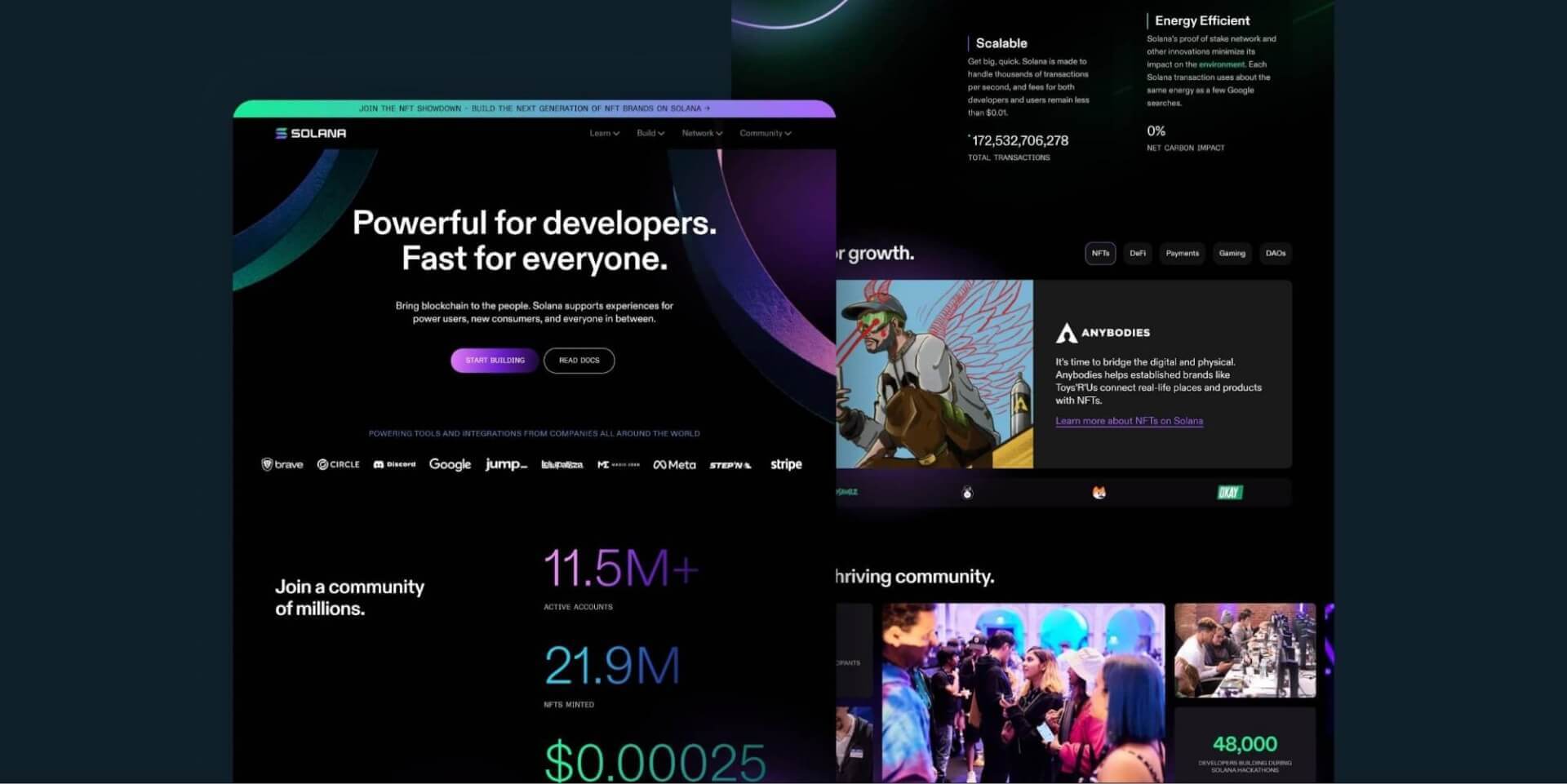Exactly How to Successfully Combine Looks and Functionality in Web Style
When creating an internet site, you need to strike an equilibrium in between appearances and performance. It's not nearly looking great; your design should additionally offer an objective and overview customers effectively. By concentrating on simpleness and user-friendly navigation, you can develop an appealing experience. What elements absolutely boost usability while preserving visual appeal? Allow's explore the key principles that can cause a harmonious mix of elegance and function.
Understanding the Significance of Visual Appeals and Performance
Understanding the equilibrium between visual appeals and functionality is crucial for producing a reliable customer experience when you create a web site. A visually appealing website grabs focus, however it's the performance that maintains customers involved. Site visitors will rapidly lose passion and leave.Consider your target audience and what attracts them in if your website looks excellent yet is hard to navigate. You want to develop a design that shows your brand name while making sure ease of usage. Structured formats, instinctive navigating, and clear calls to action can improve both aesthetic appeals and capability.

Principles of Effective Internet Design
To develop an efficient website design, you need to stick to a number of crucial principles that enhance both individual experience and visual appeal. Focus on simplicity; a clean design aids users browse easily. Make use of a regular shade system and typography to maintain comprehensibility across your site. This promotes knowledge and trust.Next, ensure your layout is responsive. Users accessibility websites on various gadgets, so your layout needs to adapt flawlessly. Pay focus to aesthetic power structure; emphasize vital components with shade, size, or placement to guide users' focus.Finally, incorporate ample white room. It avoids mess and makes material more digestible. Keep in mind, reliable website design balances aesthetic appeals and functionality, so every style choice should serve a function. By complying with these concepts, you'll create a site that's not just aesthetically appealing but likewise straightforward, eventually keeping site visitors involved and motivating them to return.
Focusing On Individual Experience
When prioritizing individual experience, you'll desire to start by recognizing what your individuals genuinely require. Simplifying navigating design can make a huge distinction in exactly how conveniently they locate what they're looking for. Also, boosting aesthetic hierarchy helps assist their attention to the most crucial elements on your website.
Understanding User Requirements
Recognizing user demands is necessary for producing an interesting internet experience that maintains visitors returning. To accomplish this, you need to recognize the objectives and preferences of your target market. Begin by performing individual study, like studies or meetings, to gather insights on what individuals value most. Pay focus to their pain factors and difficulties when connecting with comparable sites. This details allows you to customize your style, guaranteeing capability straightens with customer expectations. In addition, think about producing customer characters that represent various segments of your audience, aiding you picture their requirements throughout the design process. When you focus on recognizing user demands, you develop a web site that not just looks wonderful but additionally supplies a smooth, satisfying experience that cultivates commitment.
Streamlining Navigating Layout

Enhancing Visual Hierarchy
A solid aesthetic hierarchy is necessary in assisting customers through your web site and guaranteeing they involve with key content. To attain this, utilize dimension, shade, and spacing purposefully. Make essential aspects like headings bigger and bolder than body text, attracting focus immediately. Make use of contrasting shades to highlight phone call to activity, encouraging clicks. In addition, use enough white room to different areas, making material absorbable and inviting.Consider the flow of info; organize aspects practically, leading individuals' eyes from one factor to the following. Use aesthetic signs, like arrows or lines, to direct focus. By prioritizing aesthetic hierarchy, you boost individual experience and enhance the possibility of conversions, guaranteeing your site is both cosmetically pleasing and functionally effective.
Shade Theory and Its Influence on Use
While picking the best colors for your website might feel like a small information, it greatly influences functionality and user experience. Shade affects just how customers regard info and can boost or prevent navigating. As an example, contrasting shades can aid crucial components stick out, making it much easier for site visitors to locate what they need.Additionally, take into consideration the psychology of shades: blue typically motivates trust fund, while red creates necessity. Recognizing your target market can guide your shade selections, ensuring they reverberate well.Moreover, constant color design help construct brand identification, making your website a lot more memorable. However, be mindful-- a lot of colors can bewilder users. Adhere to a limited scheme that enhances your web content and maintains clarity.Incorporating availability is additionally important; verify your shade combinations are friendly for those with visual disabilities. By thoughtfully using color theory, you'll improve functionality and produce a much more appealing user experience.
Typography: Balancing Design and Readability
Shade options set the phase for your site, however typography plays a similarly crucial duty in enhancing user experience. You want your text to interact plainly while additionally showing your brand's individuality. Beginning by selecting typefaces that are not just eye-catching however likewise clear. Sans-serif fonts usually work well for digital screens, as they're easier to read at numerous sizes.Maintain a pecking order by using various typeface sizes and weights; this guides users with your content easily. Take into consideration line spacing and letter spacing; also limited can frustrate visitors, while as well loosened can interrupt the flow. Limitation your typeface options to 2 or 3 to keep the design cohesive.Finally, constantly examine your typography across different tools and browsers. What looks good on one screen may not on an additional. Balancing design with readability warranties that your message reverberates, maintaining your audience informed and involved.
Receptive Layout: Making Looks Work on All Instruments
To ensure your website looks excellent on any type of tool, you'll need to accept responsive design principles. This technique guarantees your site adapts to various display dimensions, supplying a perfect user experience. Beginning by making use of fluid grids and versatile images that scale seamlessly. As opposed to dealt with measurements, choose percents and relative systems, allowing your format to readjust dynamically.Next, execute media questions in your CSS. These allow you apply various designs based upon device features, like display size. This method, you can preserve visual appeal while guaranteeing functionality.Don' t ignore touch targets; make specific switches and web links are very easy to touch on smaller sized displays. Prioritize essential material, so individuals can conveniently browse your site no matter their device. By concentrating on these elements, you'll create an appealing, visually appealing experience that satisfies the requirements of all customers, whether they get on a smartphone, desktop computer, or tablet .
Carrying Out Usability Screening for Continual Improvement
To boost your website design, you need to establish clear functionality objectives that line up with individual needs. By performing customer tests, you can gather important feedback on exactly how actual individuals interact with your site. Analyzing these click here results will certainly help you make informed enhancements and create an extra effective user experience.
Specifying Functionality Goals
While visual appeals can draw users in, defining functionality objectives is vital for ensuring their experience stays smooth and gratifying. Begin by identifying what you want individuals to achieve on your website (website design london Ontario). Consider their requirements, behaviors, and tasks. Are they searching for information, making a purchase, or registering for an e-newsletter? Develop clear standards to measure success, like job completion prices or time on task. Prioritize user-friendly navigating, obtainable content, and responsive layout to enhance use. Regularly review these goals as individual expectations advance. By defining use objectives, you develop a structure for assessing and improving your web site's performance. This emphasis on usability not only enhances individual fulfillment however additionally enhances the overall effectiveness of your style
Performing Customer Examinations
Performing customer tests is necessary for refining your internet site and guaranteeing it satisfies your audience's requirements. Beginning by identifying your target individuals and developing an examination strategy that describes your goals. Utilize a mix of qualitative and measurable methods, such as studies, meetings, and task-based monitorings, to gather comprehensive feedback. Welcome participants to browse your site while you observe their communications and note any kind of problems they experience. Motivate open dialogue to catch their thoughts and feelings concerning the layout and functionality. Keep sessions brief and concentrated, guaranteeing you cover vital locations without overwhelming customers. Ultimately, ensure to document all searchings for, as this details will be very useful for making educated design decisions that enhance both visual appeals and use.
Assessing Test Results
Just how can you properly evaluate the outcomes of your usability examinations to drive continuous improvement? Begin by classifying responses into typical styles. Try to find patterns in individual habits that highlight pain factors or locations for enhancement. Usage quantitative information, like task conclusion rates and time on task, to gauge functionality fairly. Do not forget to take into consideration qualitative understandings from customer comments; they commonly disclose underlying concerns that numbers can't show. Prioritize one of the most impactful searchings for and develop actionable products for your style team. Remember, it's about iterating-- carry out changes, then examination once again. This cycle of screening, evaluating, and refining assists you equilibrium aesthetic appeals and performance, guaranteeing your web site meets individual demands properly while keeping aesthetic charm.
Often Asked Concerns
How Do I Pick the Right Color Palette for My Internet site?
To choose the appropriate shade palette for your website, consider your brand name's individuality, target audience, and psychological impact (website design london Ontario). Usage shade psychology, create harmony, and warranty readability. Test combinations to see what reverberates best with visitors
What Tools Can Assist With Website Design Visual Appeals and Functionality?
You can use devices like Adobe XD, Figma, and Sketch to boost your website design's aesthetic appeals and performance. These systems offer intuitive interfaces, partnership attributes, and pre-made templates to enhance your creative procedure and enhance your layouts.
How Can I Include Animations Without Compromising Functionality?
To include animations without endangering capability, focus on refined results that enhance user experience. Usage CSS computer animations for smoother interactions, assurance fast tons times, and examination on numerous devices to maintain performance while adding visual allure.
What Are Typical Errors to Prevent in Internet Style Visual Appeals?
When making, stay clear of cluttered formats, poor shade choices, and irregular typefaces. Don't forget mobile responsiveness, as it can estrange users. Verify your style straightens with your brand name, developing a smooth experience that involves site visitors properly.
Exactly how Often Should I Update My Website's Style for Ideal Visual Appeals?
You ought to update your website's design every 1-2 years to stay on top of trends and preserve excellent visual appeals. On a regular basis restoring visuals aids involve visitors and warranties your site stays straightforward and appealing. When you design a site, recognizing the balance in between visual appeals and functionality is vital for producing a reliable customer experience. To create a reliable web style, you require to stick to a number of essential principles that boost both individual experience and aesthetic allure. Customers gain access to websites on different tools, so your style should adapt effortlessly. When focusing on user experience, you'll want to begin by understanding what your individuals really require. Begin by performing individual research study, like surveys or interviews, to collect insights on what customers value most.